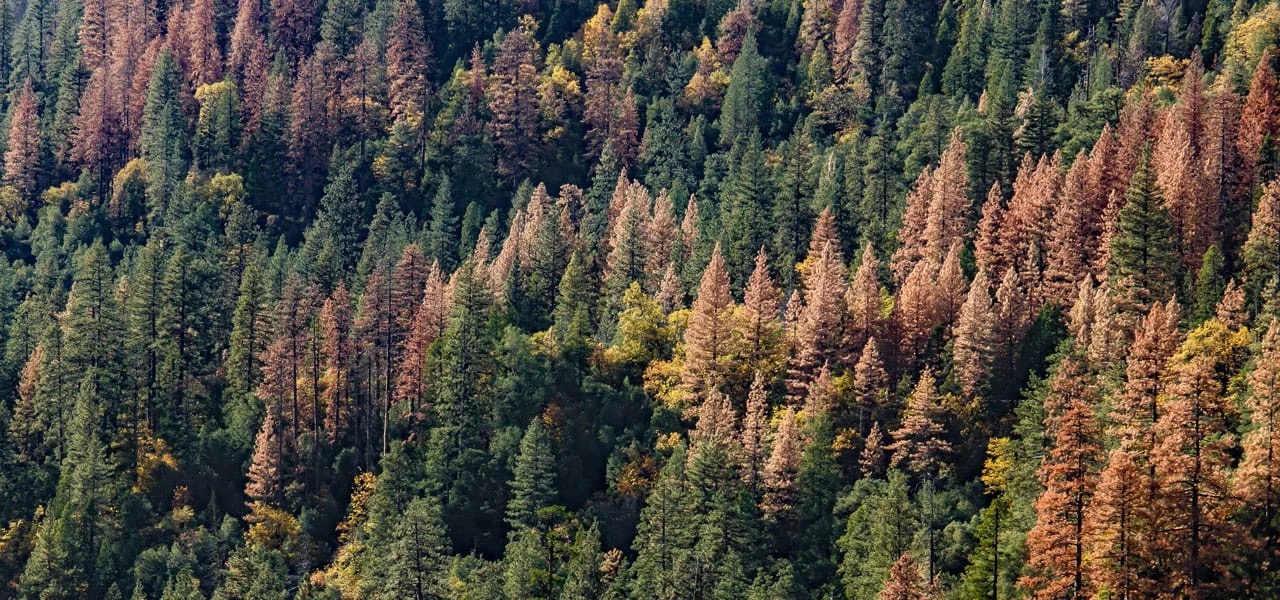There are many misconceptions about Dwarf Mistletoe growing on trees here in Colorado. The most common one we hear is “My neighbor says you can’t do anything about it, your trees will just die.” This is far from the truth.
The Truth about Dwarf Mistletoe
Dwarf Mistletoe is a major problem in Colorado forests on Ponderosa and Lodgepole Pine. It is a small, parasitic flowering plant. The plant grows into the bark and phloem of the tree, where it produces roots which provide the parasite with water and nutrients. This process kills the tree slowly by robbing it of its’ food and water.
New plants are formed by an amazing phenomenon where seeds are explosively discharged at up to 60 m.p.h. into surrounding branches and neighboring trees.
Dwarf Mistletoe is easily identified by the yellow to green to brownish-green shoots that protrude from the infected part of the tree. Other signs of infestation are reduced foliage, yellowish or brownish foliage, and “witches brooms” – distorted branches the form clumps of foliage.
Treatments For Dwarf Mistletoe

Dwarf mistletoe on Juniper
Treatment of Dwarf Mistletoe can be achieved by any of three methods.
If infestation is not too severe, pruning out of infested branches is recommended. If infestation is severe, but mortality is not imminent, spraying of the tree(s) with Florel is recommended to prevent spread within the tree, and to other trees. If infestation is severe and the tree is near death, removal of the tree(s) is usually recommended. When trees are near death from Dwarf Mistletoe, they become very susceptible to Ips and Pine Beetle. To prevent beetle outbreaks, we strongly recommend removing dying trees.
Spraying of infested trees with Florel is the most common treatment. Florel is a plant growth regulator. This spray is done mid-summer when the Mistletoe shoots are in full foliage. Florel dries up the reproductive parts of the plant, preventing seed dispersal.
This process needs to be repeated every three years, since it takes the plant three years to come back to seed after Florel treatment. The Mistletoe plant cannot be killed entirely since this would harm or kill the tree as well.
Other practices for dealing with Dwarf Mistletoe infestations include thinning of forests for maximum health of trees, and planting of resistant trees such as Douglas Fir, Blue Spruce, White Fir, Bristlecone Pine, Limber Pine, as well as a variety of deciduous trees.
If you are having problems with Dwarf Mistletoe, please don’t hesitate to call for a consultation.



